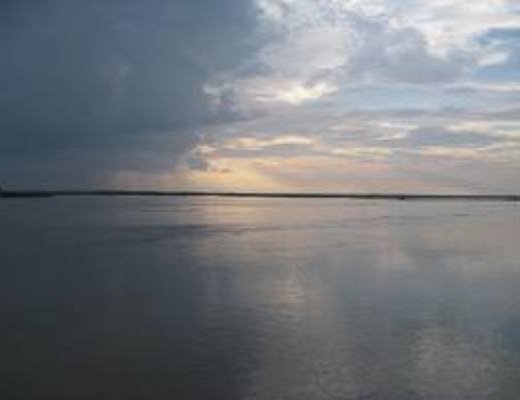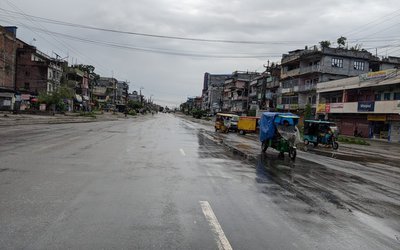
The 1997 Kosi Study Agreement includes three components. (1) Feasibility study of the Kosi High Dam Project, (2) Feasibility study of Kosi Canal Waterway providing Nepal direct waterway access to sea, and (3) Feasibility study of the Sun-Kosi Dam Project earmarked to provide irrigation and power benefits exclusively to our country.
The multipurpose Kosi Project that includes all above mentioned three components is extremely important for our country. Needless to say that all components of this multipurpose project must be implemented in a way to fully serve the interest of our country or else it could even prove to be a curse to our country.
Nationwide Debates
There is a great urgency to NATIONWIDE DEBATES on Kosi projects development particularly because this mammoth multipurpose storage dam project involves on one hand the submergence of vast area of prime agricultural lands in the mid hill that would have adverse consequences for our country's economy and environment whereas on the other hand the most important component of this multipurpose project is the Kosi Canal Waterway earmarked to provide our landlocked country direct access to sea having enormous significance in boosting our international trade by facilitating transit across India.
Kosi Dam Indispensible
The Kosi River known as the SORROW OF BIHAR, just like the Yellow River of China also known as the SORROW OF CHINA, was infamous for changing its courses each time accompanied with enormous loss of life and property.
The Kosi dam project study was initiated during the British rule period to resolve Kosi flood problems. Kosi Dam is indispensible according to all internationally known experts on Kosi to save the life and properties of millions in North Bihar.
Inclusion of Canal Waterway
Surprisingly, Indian Government had been insisting that after the completion of the Kosi embankments the Kosi flood control problems have already been solved once for all times. However, Nepal's presentation in the Indo-Nepal meeting on Kosi convinced Indian representatives that the Kosi floods are now even greater menace to the people of Bihar. Kosi high floods could easily devastate vast regions of India by changing its course. It implies that the benefit to accrue from the Kosi flood control would be too great.
Experience of China ( Yellow River) and other countries tells us that large storage dam projects requiring submergence of vast areas of fertile valleys must be implemented to control future Kosi floods. Obviously, it would require a great sacrifice on the part of Nepal to save North Bihar from catastrophic Kosi floods in future. Thus India too could not be indifferent to Nepal's Kosi navigation canal proposal if a solution to Kosi flood problems is to be found.
Nepal succeeded to achieve a historic breakthrough to include the navigation canal between Chatra and the Ganges linking Nepal with the seaport as an integral part of the whole project in course of finalization of the scope of the Multipurpose Kosi Dam Project study.
Sun-Kosi Dam Project
The Sun-Kosi Dam project would be providing water for irrigation and power exclusively to Nepal. Unfortunately this very important project for our country would be precluded on technical ground if the Kosi Dam project is implemented first.
Despite the reluctance of Indian side this project was included in the Kosi study to expedite implementation of this project before the commencement of the Kosi Dam Project. It implies that Indian Government would be obliged to provide financial and all possible helps to Nepal to implement promptly this project to pave the way to Kosi Dam Project
Initial Confusion
When the agreement was signed between Nepal and India in 1997 to conduct detailed feasibility study of the Multipurpose Kosi High Dam Project, which was agreed to be in line of our proposal described in reports ( Ref-1, Ref-2), our media and political parties were greatly confused. Many even believed that Nepal's interests might have been compromised. This confusion was indeed a hangover from the 1959 Gandak Treaty, which was indeed harmful to our country. A series of public meetings gradually helped to quell the public fear of the 1959 Gandak Treaty repetition.
Multipurpose Kosi Canal
The Kosi navigation canal with a minimum depth of nine feet and suitable to operate 1500 ton barges could be used as main irrigation canal as well as for generation of electricity.
A very similar example is the use of the multipurpose canal drawing water from the Upper Rhein River for hydropower generation along with navigation to provide the Switzerland direct deep waterway access to sea.
Switzerland's Access to Sea
The Rhine between Basle in Switzerland and Iffezheim is almost entirely canalised. On a stretch of 180 kilometres , there are 10 dams , provided with hydropower stations
and locks. Between Basle and Breisach, the old river bed carries hardly any water; almost all water is diverted through the Grand Canal d'Alsace on the French side, to ensure safe shipping and hydropower generation around the clock. Only when there is a large supply of water, then the old river bed will receive more water than the canal. France gained the right to do this in the 1919 Treaty of Versailles; the right applies to the segment between Basle and Neuburgweier / Lauterbourg, where the Rhine forms the border between France and Germany.
Navigation and Dried Up Kosi
Policy makers of both India and Nepal might not have been properly briefed about the already signed 1997 Kosi Study agreement to conduct detailed feasibility study of the Kosi navigation canal, as a result both our countries have recently announced to develop navigation by using the natural course itself of the Kosi river. We should not forget the fact that the Kosi river is expected to dry up in greater part of the year as a result of heavy withdrawal of water for irrigation.
Kosi Dam Project: Boon or Bane
Utilization of the full potential of the Multipurpose Kosi Dam project inclusive of its Kosi Canal Waterway component leading to a seaport access would be a` boon to our landlocked country despite the fact that this project would have very adverse impact on environment and economy of the hill region. On the contrary this project could prove to be bane if the navigation component is excluded or deferred to a` future date.
Ref:
(1) Planning Kosi High Dam Project: Dr. AB Thapa
WECS
(2) Access to Sea, Kosi Canal Waterway: Ananda Bahadur Thapa
The Nepal-India Water Resources Relationship: Challenges
Springer: June, 2008

Dr. A.B. Thapa
Thapa writes on water resources issue
- Dudhkosi Multipurpose Project
- Jul 11, 2022
- Dudh-Kosi Power Project And Kosi Treaty
- Sep 27, 2021
- Uttarakhand Glaciers And Recent Disaster: A Lesson To Our Country
- Mar 02, 2021
- Multipurpose Langtang After Melamchi: Inter-Basin Water Transfer
- Nov 04, 2020
- Large Storage Dams Projects Wary of Giving Away Children’s Inheritance
- Dec 22, 2019















